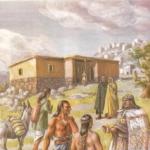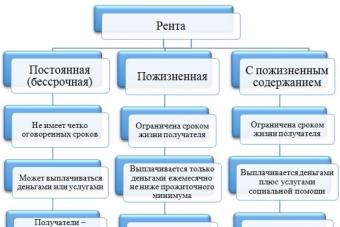Despite the fact that the content of iron in the body is small - about 0.005 of the total weight, it has a huge impact on the functioning of many systems and organs. Its main part is in hemoglobin, about 20% is deposited in the liver, muscles, bone marrow and spleen, and about 20% is involved in the synthesis of most cellular enzymes.
The role of iron in the body
It is difficult to overestimate the role of iron in the body. It is involved in the process of hematopoiesis, cell vital activity, immunobiological processes and redox reactions. The normal level of iron in the body ensures a good condition of the skin, protects against fatigue, drowsiness, stress and depression.
Iron performs the following functions:
- It is one of the trace elements that catalyzes the processes of oxygen exchange, providing tissue respiration.
- Provides the proper level of cellular and systemic metabolism.
- It is part of enzymatic systems and proteins, including hemoglobin, which carries oxygen.
- Destroys products of peroxidation.
- Provides body and nerve growth.
- It takes part in the creation of nerve impulses and their conduction along nerve fibers.
- Supports the functioning of the thyroid gland.
- Contributes to the normal functioning of the brain.
- Supports immunity.
Lack of iron in the body
The main consequence of a lack of iron in the body becomes. This condition can occur for various reasons. It is more common in children, pregnant women and the elderly. This is due to the fact that in childhood and during the period of bearing a child, the body's need for iron increases, and the elderly are less able to absorb it.
Other causes of iron deficiency are:
- unbalanced diet or malnutrition;
- prolonged bleeding or large blood loss;
- deficiency in the body of vitamin C and B12, which promote the absorption of iron;
- diseases of the gastrointestinal tract that do not allow iron to be absorbed normally;
- hormonal disorders.
Iron deficiency in the body is manifested by chronic fatigue, weakness, frequent headaches, decreased pressure and drowsiness, all these symptoms are the result of oxygen starvation of tissues. In more severe cases of anemia, pallor of the skin, decreased immunity, brittle nails and hair, rough skin, and taste perversions are observed.
Excess iron in the body
Such phenomena are rare and occur as a result of taking nutritional supplements, with iron metabolism disorders, chronic diseases and alcoholism. Too much iron can cause damage to the brain, kidneys, and liver. Its main symptoms are yellowish skin tone, liver enlargement, heart rhythm disturbances, skin pigmentation, nausea, loss of appetite, stomach pain and weight loss.
Norm of iron
The toxic dose of iron for a person is 200 mg, and the use of 7 grams at a time. and more can lead to death. To ensure the normal functioning of the body, men are recommended to consume about 10 mg per day. iron, for women, the indicator should be 15-20 mg.
The daily iron requirement for children depends on their age and body weight, so it can range from 4 to 18 mg. Pregnant and lactating women need 33-38 mg.
The best foods for iron replenishment are animal liver and meat. In them, the trace element is in the largest quantities and in an easily digestible form. Inferior to these products is rabbit meat, beef kidneys and lamb. Iron, present in plant foods, is absorbed slightly worse. Most of all it is found in dry rose hips, millet, lentils, semolina, buckwheat, oatmeal, dried apricots, raisins, nuts, plum juice, pumpkin and sunflower seeds, seaweed, apples, green vegetables, spinach, pears, peaches, persimmons, pomegranates and blueberries. Slightly less iron in rice, slightly less iron in potatoes, citrus fruits and dairy products.
To improve the absorption of iron, it is recommended to combine the use of animal products with plant products, especially those rich in vitamin C and. Succinic acid, sorbitol and fructose contribute to the absorption of the element, but soy protein inhibits the process.
Foods containing a large amount of iron are necessary in the diet for the normal functioning of the body. This element is responsible for the production of red blood cells. It is in red blood cells that hemoglobin is located, which transports oxygen from the lungs to every living cell in the body. Iron is a component of hemoglobin. Iron deficiency makes it so that the body does not have enough oxygen, and as a result we suffer from anemia. The disease can be detected by taking a blood test. What other functions does iron perform in the human body?
- Takes part in oxygen transport, being a component of hemoglobin and myoglobin, binds oxygen in erythrocytes;
- Plays a major role in the production of high-energy phosphorus bonds;
- Used as a component in the body system, taking part in the transfer of electrons;
- It is responsible for maintaining normal metabolism by participating in tyrosine iodination reactions. It is a component of enzymes: peroxidase and catalase;
- Takes part in the creation of blood components such as red blood cells and white blood cells. Due to this, it is responsible for the correct composition of the blood and the mechanisms of cellular and humoral immunity.

Iron deficiency occurs most often in women who suffer from heavy menstruation and in people with cancer. Pregnant women are also susceptible to anemia due to iron deficiency. If the expectant mother suffers from anemia, this can have a bad effect on the child: she will be born weak and will have a low body weight. A pregnant woman should supply her body with 26 mg of iron daily.
Sources of iron in the diet

Iron is the element best absorbed from food. Foods that are rich in iron include:
- liver, pork and chicken;
- whole grain rye bread;
- egg yolk;
- parsley;
- beans, peas, soybeans;
- broccoli;
- shrimps;
- beef fillet;
- red meat;
- green and red vegetables.

Iron is also found in blackcurrant, cranberry and mountain ash juices. The absorption of iron facilitates. The assimilation of this element is delayed by carbonated drinks, tea and coffee. A healthy diet will help fill iron deficiency. However, when the demand for this element is greater, nutrition must be supported with special preparations with iron. For pregnant women, taking them is especially important, however, you should consult your doctor before taking them.
Excess iron in the diet
Too much iron in the diet can be deposited in the liver, pancreas, and other organs, causing poisoning. Excess iron can also cause a disease called hemochromatosis. Iron overdose increases the risk of heart disease and cancer. Excess iron in the body can also cause hormonal disorders, pain, osteoporosis and depression. Therefore, be careful about the quantity and quality of iron supplements and foods you use.
It should be remembered that iron in food should be combined with foods containing a large amount of vitamin C (for example, sauerkraut, red peppers, parsley, broccoli, black currants, oranges), as this is necessary for its absorption from food. When compiling a diet, it is worth knowing that foods rich in calcium and phytic acid reduce the absorption of this element. Phytic acid is found in wheat bran, soybeans, coffee, tea, nuts, and chocolate.

Iron during pregnancy
Iron plays an important role in the nutrition of pregnant women, as it determines the proper development of the brain and fetal tissues. Therefore, it is necessary to take care of correctly. If you do not take enough iron with food, you need to purchase preparations containing iron, as well as vitamin capsules.
Sample menu for pregnant women and people with low iron
This menu can be used in the diet of pregnant women and people with iron deficiency.
| First breakfast | 3 slices of black bread, a teaspoon of butter, lettuce, cottage cheese and 2 slices of white cheese, green onions. |
|---|---|
| Lunch | 2 slices of white bread, 4 slices of meat with a sauce of 2 tablespoons of sour cream 9%. and a teaspoon of horseradish, lettuce, a glass of carrot juice. |
| Dinner | Bean soup (250 ml), beef stew with onions and mushrooms; 3/4 cup buckwheat; lettuce salad, broccoli, tomato and a teaspoon of sunflower oil, a glass of apple juice. |
| afternoon tea | 5 tablespoons of cottage cheese with a glass of berries, a slice of black bread with butter, a glass of blackcurrant juice. |
| Dinner | Beef fillet steak (150 g), boiled potatoes with a spoonful of dill, coleslaw and a small apple with a teaspoon of sunflower oil, a glass of beetroot juice. |
Iron is essential for the daily functioning of the body. Remember: a healthy diet is a diet rich in iron.
Hello dear readers. Iron is one of the most abundant metals in the earth's crust. It has been used by man for the manufacture of various materials since ancient Egypt. But, iron is necessary not only for the manufacture of weapons and household items, but also for the health of our body. The article answers the questions: “Why does our body need iron?” and “How to make up for the lack of iron?”. After all, with its deficiency, the work of the body can change significantly. And it usually happens for the worse. Iron is a biologically important element in a living organism, the role of which is extremely difficult to overestimate.
On my blog, I have an article, or rather my story, about how I managed with food, without the use of drugs.
What is iron and its role in the body
Iron is involved in a number of important processes in our body, which are global in understanding a closed biological system (which is our body).
1. A necessary element for the formation of hemoglobin. It is iron that reacts with oxygen, and thus supplies it to the cells of our body. And hemoglobin is also responsible for the removal of carbon dioxide. It is this chemical element that gives our blood its red color.
2. Responsible for the formation of myoglobin, which enables our body to store oxygen. Therefore, we can hold our breath for a while.
3. Responsible for the neutralization of toxic substances in the liver.
4. Responsible for immunity. This chemical element provides the activity of interferon, which is released if our cells are affected by a virus.
5. The thyroid gland synthesizes hormones, and this process requires iron.
6. Without iron, vitamins of group B will not be absorbed. And the health of our body, including the beauty of the skin, hairline, and nail plates, depends on the abundance of vitamins of this group.
7. Fe is also simply necessary for children, as it normalizes growth.
8. Without iron, protein metabolism is impossible, and the element is also involved in DNA synthesis.
Thus, one chemical element is involved in a lot of the most important biochemical processes of the body.
Therefore, iron deficiency is considered a disease that should be treated. And also it is the lack of oxygen that is considered the cause of the formation of cancer.
Therefore, for good health, an important condition is the normal content of iron. It is important for everyone to know the symptoms of a deficiency of this substance.
The main symptoms of iron deficiency
Anemia is a condition when the concentration of hemoglobin and red blood cells in the blood is below normal. In medical terms, the disease is called Anemia. And one of the causes of this disease is a lack of iron.
Deficiency can occur for several reasons:
✔ Wrong diet.
✔ Intensive body growth.
✔ The period of pregnancy and lactation.
✔ Extensive blood loss.
Therefore, in order to understand whether you have an iron deficiency, you need to know the main signs of such a condition. After all, it is very dangerous.
Of course, only a physician can make an accurate diagnosis based on tests, and not all symptoms may appear.
However, their presence is a wake-up call that should prompt you to think about your health.
Iron deficiency symptoms
1. Change in the color of the skin. The skin becomes pale.
2. Increased fatigue.
3. The appearance of atypical for you shortness of breath during a period of moderate physical activity.
4. Rapid heartbeat without an objective reason.
5. Decreased temperature of the feet and hands.
6. Brittle nails.
7. Frequent bouts of headache.
8. Formation of plaque on the tongue.
9. Fainting and hypotension.
10. Strange taste preferences are likely, for example, raw spaghetti and meat have become very appetizing to you.
Symptoms may not be immediately apparent once the body is deficient. But, if this condition lasts, then the symptoms will gradually appear.
How much iron is needed per day for the body
To calculate the norm, we will assume that our body absorbs only 10% of the products.
Daily Value for Adult Men - 10 milligrams.
Norm for a teenage guy - 11 milligrams.
For adult women - 18 milligrams.
During pregnancy and lactation - from 20 to 30 milligrams.
teen girl - about 14 milligrams.
Ladies over 50 - about 12 milligrams.
Children up to the age of 3 years - about 6-7 milligrams.
Children from 3 to 11 years old - 10 milligrams.
Children under 14 - 12 milligrams.
Keep in mind that the need is individual, and depends on the level of physical activity. If you follow a diet that excludes the consumption of meat, fish and poultry, then the rate increases by an average of 1.8. This is due to the lower absorption of non-animal iron.
You, for certain, met a set of tables in which the content of iron is painted. But when calculating the diet, an adjustment should be made for the fact that not all iron is absorbed.
Therefore, an approximate diet for a normal daily intake of iron will be given under the following heading.
Iron in food - main list and table
When choosing food products, it is important not only the content of iron in them, but also the degree of its digestibility.
Iron is absorbed to a greater extent from foods of animal origin, meat and fish, often red in color. This type of iron is called heme iron.
There is also a second type of iron - non-heme. It is safer for our body, but it is worse absorbed. It is found in other foods, vegetables and fruits, legumes.
Detailed information on the iron content is presented in the table below. I also want to provide a list of the best iron rich foods.
Rating of foods that are rich in iron
1. Shellfish.
2. White beans.
3. Beef liver.
4. Beef.
5. Other types of meat.
6. Fish. Tuna is in the lead.
8. Products of plant origin. Vegetables, fruits, cereals, dried fruits. All types of nuts, especially pistachios and walnuts.
9. Bitter chocolate.
10. Seeds. You can treat yourself to a healthy delicacy - halvah. Give preference to sesame halva.
11. Dried mushrooms.
An example of calculating the intake of 2.5 milligrams of iron that will be absorbed is about 100 grams of boiled beef. And if you don't eat meat, then to consume 4.1 milligrams of non-heme iron, you need to eat about 140 grams of tofu.
fruits containing iron
Among the berries and fruits, the well-known pomegranate is in the lead, the juice of which is often brought to pregnant women to increase hemoglobin. Also on this list were persimmons, dogwoods, apples, plums, mulberries, chokeberries, rose hips.
vegetables rich in iron
The most iron-rich green vegetables are spinach, lettuce, greens, cabbage, beans, pumpkin seeds, broccoli, and beets. All of them are rich in folic acid, and the structure of chlorophyll is similar to the chemical structure of hemoglobin. Vegetables are recommended to be consumed raw or slightly undercooked.
Red meat as a source of iron to increase hemoglobin
Red meat is the number one food for boosting iron levels. First, it is better absorbed.
Secondly, the most affordable product. And of course, it has a high iron content. But there are a number of nuances here.
Preference should be given to certain types of meat, namely beef, rabbit, veal. And if possible, the liver and tongue. Try to buy the freshest product, ideally fresh meat.
The method of preparation is also important. Roasting should be medium, and preferably light. You should not stew meat, because due to the long cooking, all the iron will go into the water.
Grains that contain iron
It is recommended to use buckwheat, oatmeal, barley groats, rye, wheat bran, bulgur, rice. It is best if you use unpolished cereals. They contain the most useful substances. This is especially true for rice.
I also want to focus on what hinders and promotes the absorption of an important element from products.
What promotes and hinders the absorption of iron
Remember that the cause of iron deficiency may not be in the diet at all, and the deficiency itself may be a symptom of another disease.
Reduces the absorption of iron:
- High slagging of the intestine, iron is absorbed by the upper intestine.
- A diet that is dominated by fatty foods and dairy products, since calcium reduces the absorption of iron and vice versa, therefore, these products should not be combined.
- Tannin found in tea and coffee.
- Prolonged heat treatment of food.
- Fitins, which are part of ordinary bread, as opposed to wholemeal bread.
- Diseases of the gastrointestinal tract.
Iron in foods is well absorbed by our body when combined with such vitamins, micronutrients and foods.
Increases the absorption of iron:
- Vitamin C.
- B group vitamins.
- Cooking in cast iron cookware.
- Molybdenum, which is found in rice, tomatoes, parsley.
- Copper, which is rich in nuts and avocados.
- Cobalt is found in chicory and spinach.
- Zinc, so eat seafood, seeds, buckwheat and rye bread.
- Cinnamon.
- Thyme.
- Mint.
- Anise.
- Moderate consumption of pickles and sauerkraut along with iron-rich foods.
- The use of onions and garlic along with cereals, they contain sulfur, which increases absorption.
Do not blindly chase for a high iron content. Everything needs a balance, so any diet should be thought out.
Excess iron leads to poor absorption of Ca, Mg, Zn, which is also bad for the body. The diet should include both heme and non-heme iron.
Choose healthy and wholesome foods, lean meats, seafood, vegetables and fruits, and healthy grains.
Remember, in large doses over 200 milligrams per day, iron is toxic, and the lethal dose is from 7 grams.
With an excess of iron, the body gives us signals in the form of symptoms:
✔ Headache attacks.
✔ Dizziness.
✔ The appearance of pigmentation on the skin.
✔ Chair disorders.
✔ Vomit.
Excessive iron intake can lead to impaired liver function. It also increases the likelihood of a whole range of serious diseases, such as diabetes and atherosclerosis.
The normal functioning of the immune system is disrupted, and the risk of various types of tumors increases.
Do not take iron-boosting medications unless directed by your doctor.
If after changing your diet, your condition does not improve, then you should seek medical help.
And anemia is not a harmless disease at all, and can lead to a lot of consequences. Therefore, it is better to diagnose the problem at an early stage, and begin treatment under the supervision of a doctor.
Also, treatment should include the correct selection of physical activity and the rejection of addictions.
Continuation
Women who are watching their figure suffer the most from iron deficiency, because their diet is too low of iron. There are lovers of dairy cuisine and fruit and milk diets who eat only dairy products and fruits, and they are also very low in iron. It is present in egg yolks, but in a poorly digestible form. Therefore, a vitamin C rich food should be added to this diet to double the amount of iron absorbed from the yolk (for example, parsley, dill, lemon juice, orange juice, or rosehip infusion).
Many scientists argue that the point is not that the iron from the yolk is poorly absorbed, but that it blocks the absorption of this element from other products. Therefore, it should be remembered that the optimal dose of vitamin C, which increases the absorption of this trace element, is 500 mg.
Older people often do not absorb iron well, so they need to take vitamin C and hydrochloric acid with iron-rich foods. But only a doctor can determine whether hydrochloric acid treatment will have side effects. No one should take hydrochloric acid without the advice of a doctor!
Where is iron found
Meat, liver, fish, poultry are all good. sources of iron. They have a lot of protein, which improves its absorption and use. There is a lot of iron in the liver and tongue, in beans, peas, in sprouted wheat. Many nutritionists believe that women who lead a sedentary lifestyle should take iron as a medicine - as prescribed by a doctor.
You can also use iron in tablets, as long as this iron is of organic origin (for example, in food prepared for us by nature itself).
Sources of iron
The richest source of iron is molasses, a by-product of sugar production, which also contains a lot of magnesium: 1 tablespoon of molasses (about 15 g) contains 3.2 mg of this trace element.
100 mg of cooked calf liver contains 12 mg of iron, while beef liver contains 7 mg. In some salt deposits, 1 kg of rock salt contains about 450 mg of iron. Rock salt is an effective means of preventing anemia, which affects about 20% of the world's population (data from the World Health Organization).
A lot of iron in plum juice, dried apricots, raisins, nuts, pumpkin and sunflower seeds.
30 g of sprouted wheat contains 3 mg of iron. They are also rich in black bread, bran, wholemeal bread. But about 5% of iron is absorbed from bread products and vegetables, from animal products (tongue, fish liver, beef) - 15 - 20%. However, plant-derived iron is organic and triples absorption.
Make it a rule to combine a boiled product (usually any animal product is cooked) with a vegetable one, so that there is three times as much vegetable. Here, this rule reflects the ability of our body to absorb trace elements in an organic form. In addition, there is another law: trace elements are not absorbed without vitamins.
An excellent source of iron is the liver.
Onions increase the absorption of iron! Still would! He is a real pantry of vitamins, especially vitamin C.

Wholemeal bread, black bread, bran (wheat and rye), cereals, greens, salad vegetables, cabbage are rich in iron.
So, in order to satisfy our body's need for iron, we must first of all:
- there are natural, unrefined products;
- prefer foods that are rich in iron;
- remember about vitamin C and vitamin B12, which make iron easily digestible.
Few people know that simple stinging nettle of any variety (both large-leaved and small-leaved) contains many useful amino acids, for example: lecithin, enzymes (oxidase, peroxidase and chlorophyllase) and organic acids, including formic acid. But, besides all this, there are a lot of mineral salts in the nettle (15 - 19%). It's just a pantry of vitamins, enzymes, trace elements. Among them are compounds of silicon, potassium, calcium and iron, vitamins A, C, K, as well as 4-7% chlorophyll and recently discovered plant secretin, which activates the excretory activity of the stomach, liver, spleen and intestines, intestinal motility. That is why folk medicine has been treating anemia with nettle for centuries. Clinical experiments have confirmed that nettle perfectly treats anemia and is not inferior to synthetic iron preparations.
Every housewife in the village knows that chickens will lay better if dried nettles are added to their feed, and folk herbalists advise taking a course of treatment with fresh nettle juice squeezed from the leaves and trunks of young plants collected before flowering. It is easy to make: collect, rinse thoroughly, pass through a juicer or mixer with a little water, and then squeeze out the juice. Take 3 tablespoons daily. Juice is not tasty, but very useful. You can drink it with honey. The juice keeps well for several days in the refrigerator.
In 1941, the United States entered the war, and the National Conference on Defense Nutrition decided to fortify flour and bread with iron to prevent anemia among the American population. Fatigue is the first sign of iron deficiency and the resulting anemia, and war does not tolerate tired people! But in America, only white flour and white bread (that is, pure starch) were produced, while a valuable part of the grain went to waste.
Nutrient levels in vegetarian diet generally consistent with existing recommendations, however, in the diet strict vegetarians (vegans) relatively low in protein, omega-3 fatty acids, zinc, vitamin B12 and folic acid.
many vegetarians and people interested vegetarian food, worries about the question of iron - will the body receive such an important microelement for hematopoiesis as, in the required amount when switching to vegetarianism?
Plant foods contain only non-heme iron, which, in principle, does not mean that it is not absorbed by the body - such iron is more sensitive than heme iron to substances that both prevent and enhance its absorption. However, according to the American Dietetic Association's Position, iron intake of vegetarians even higher than non-vegetarians, and cases of iron deficiency anemia among vegetarians are no more frequent than among all others.
Daily human need for iron averages 10-20 mg, and it increases depending on various factors (for example, sex, age, pregnancy, donation, presence of diseases). In women, the need for iron is higher than in men (18 mg), and the need for iron during pregnancy is also high - up to 33 mg.
Despite the fact that meat products are the most rich in iron (mainly offal), iron is also contained in many other products, both plant and animal, which are vegetarian.
Foods rich in iron

Among vegetarian products buckwheat, peas, lentils, beans, eggs, oatmeal, millet, green apples, pears, dried apricots, persimmons, figs, nuts, cheese, rice, potatoes, green onions, pomegranate, beets, radishes, plums are the richest in iron, pumpkin, green vegetables, parsley, bananas, mushrooms (especially dried ones).
Since plant-based iron is non-heme, and therefore less absorbed than the heme iron found in meat, there are a number of factors that should be taken into account when consuming iron-rich foods that affect iron absorption. In order to increase the absorption of iron, iron-containing foods should be consumed with foods that promote its best absorption, such as those containing vitamin C, and separately from competing products.
Foods that interfere with iron absorption(they should be eaten separately):
- Wheat and wheat products (including bread)
- Milk and dairy products, other foods high in calcium
- Coffee and tea
The latter are best replaced with dried fruit compotes and freshly squeezed juices.
How to increase iron absorption
The best way to improve iron absorption is to include more iron in your diet. vitamin rich foodsC, and consume them in conjunction with iron-containing, for example, fruit and vegetable juices.
TO vitamin sourcesC include citrus fruits, rose hips, sea buckthorn, cranberries, sweet peppers, tomatoes, potatoes, apples, Brussels sprouts, dill, parsley and others. Generally, ascorbic acid, as vitamin C is otherwise called, plant foods are very rich.

Soaking and sprouting legumes is also a good way to increase iron absorption, as this reduces their phytate content, which prevents iron absorption.
Many people try to increase their iron levels by taking special iron supplements. It is strongly not recommended to self-medicate, since an extreme dose of iron (from 200 mg) can have a toxic effect on the body of a healthy person.





